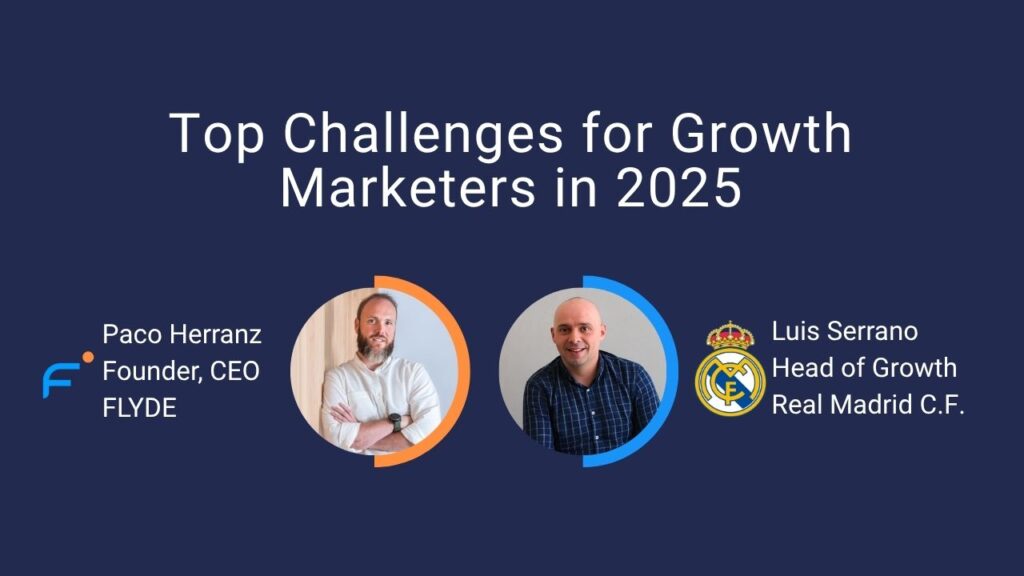Category: Marketing
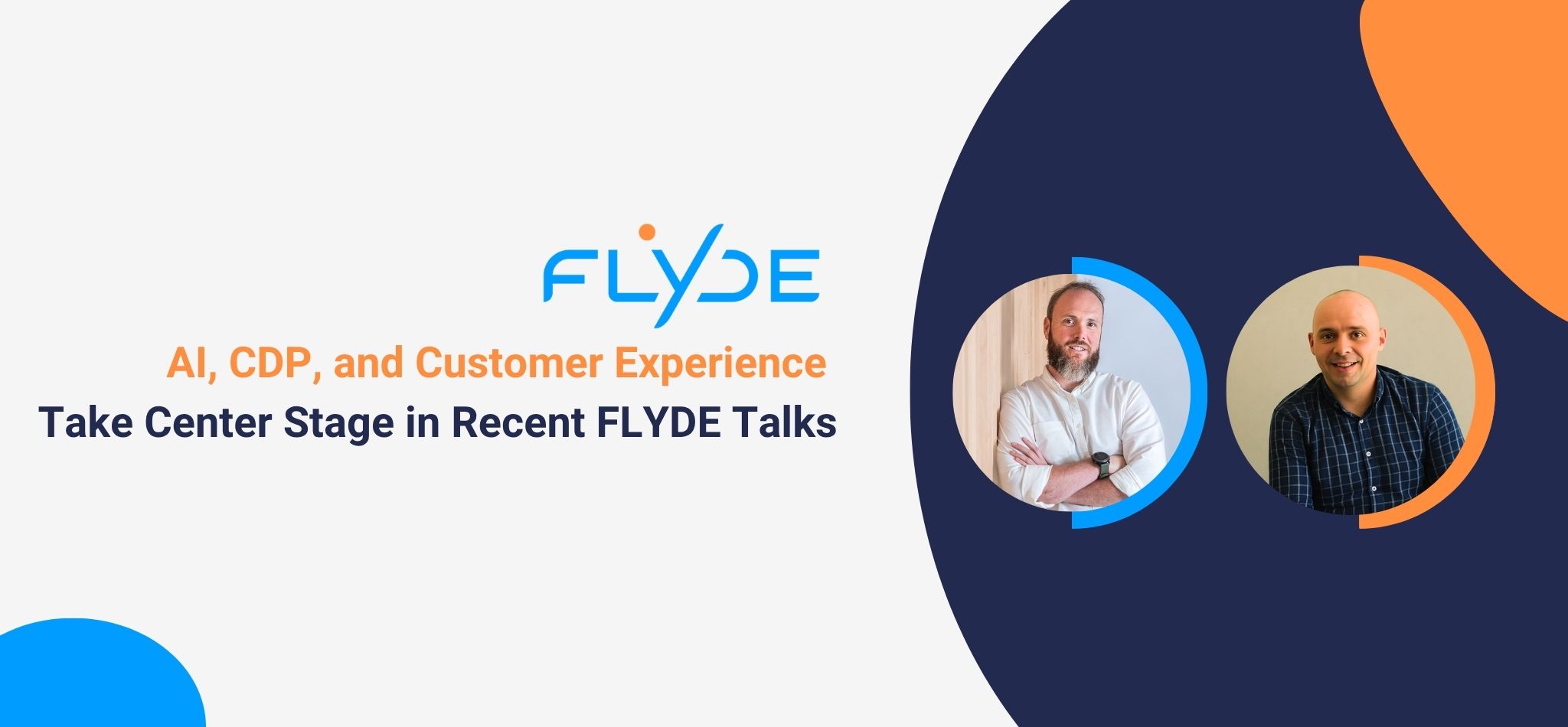
In this episode of FLYDE Talks, Luis Serrano, Head of Growth at Real Madrid, sits down with Paco Herranz, Founder and CEO of FLYDE, to explore how the concept of Growth Marketing has evolved in an environment shaped by artificial intelligence, extreme personalization, and data privacy—and how it can be applied to the unique context of football.
With this new episode of FLYDE Talks, we continue to bring together leading voices from across the marketing world to discuss, clearly and without jargon, the ideas that are transforming the industry today.
WHAT DO WE REALLY MEAN BY GROWTH?
Paco opens the conversation with a question every growth professional has asked themselves: What exactly do we mean by “growth”?
For Luis, the term has expanded significantly. What once referred to scaling digital channels now means understanding growth from a holistic perspective: digital and physical channels, data, user experience, and brand value.
“We’re no longer just talking about digital channels,” he says. “We’re talking about everything.”
Growth is no longer about funnel optimization alone; it’s about connecting every touchpoint between the user and the brand under one unified objective.
REAL MADRID’S ‘NORTH STAR’: THE SATISFIED MADRIDISTA
Paco and Luis agree that successful growth depends on having a clear metric that guides the overall strategy: the famous North Star Metric.
At Real Madrid, that North Star is the satisfied Madridista: a fan who trusts the club, shares their digital identity, and enjoys a full, consistent experience across online and offline channels. The satisfied Madridista is the “guiding star” behind every growth initiative at the club.
To measure that satisfaction, the team tracks KPIs that range from fan acquisition and retention, including engagement metrics, NPS (Net Promoter Score), and churn. The challenge lies in turning every interaction into a source of value, for both the fan and the brand.
‘ONE FAN, ONE EXPERIENCE’: UNIFYING DATA FOR ONE-ON-ONE PERSONALIZATION
From FLYDE’s perspective, growth can only scale if data is unified. It starts with data collection—first, second, and third party—and continues with data unification to create a single customer profile, the key to enable precise segmentation, activation, and measurement.
The unified customer profile is the foundation of any growth strategy. It allows teams to move from analysis to action: building micro-audiences, orchestrating omnichannel campaigns, and, most importantly, measuring attribution accurately. The real challenge isn’t gathering more data, but rather knowing where each impact truly comes from.
Real Madrid applies this philosophy with a simple vision: One fan, one experience.
From email to app, store to stadium, every interaction is tracked and optimized to deliver the best possible experience within the club’s ecosystem.
The ultimate goal is true micro-segmentation, evolving from “many-to-many” to “one-to-one,” offering each fan exactly what they need. As Luis puts it simply: “If I have a cat, why are you offering me dog food?”
Read more about the importance of data unification.
‘SEO IS NOT DEAD, AND GEO IS SEO.”
“SEO isn’t dead—and GEO is SEO.”
Through experiments with LLMs and metasearch engines, Luis found that generative AIs don’t search websites directly—they search search engines. In other words, for an AI to index your content, you still need to rank well on traditional search engines first.
So optimizing for visibility in AI results still means doing SEO: paying attention to microformats, structured data, and quality content. New tools, like Adobe’s LLM Optimizer, can even estimate how readable and indexable your content is for AI.
The takeaway is clear: the future of organic traffic will be hybrid and those who master SEO today will remain visible in the age of AI. At least based on what we know today.
MACHINE LEARNING AND GENERATIVE AI: THE NEW MARKETING DUO
Luis asks Paco how FLYDE integrates AI, and Paco explains that for him, AI isn’t a trend but a natural evolution of data-driven marketing.
FLYDE uses Machine Learning for key tasks:
- Measuring KPIs
- Detecting customer value patterns and projections
- Predicting churn
- Recommending products or audiences
On top of that, FLYDE has developed Brain, a generative AI layer across the platform. Brain acts as a data assistant, enabling any user, technical or not, to interact directly with their data ecosystem: building audiences, suggesting actions, analyzing campaigns, or even generating complex queries.
Its mission is to democratize access to data and remove the “blank page fear.”
As Luis jokes: “AI is like a shrimp cocktail—we have so many things to pick from that we don’t know where to start.”
THE CDP: THE NATURAL EVOLUTION OF THE CRM
Both speakers agree that a Customer Data Platform (CDP) like FLYDE is the strategic backbone that ties everything together.
At Real Madrid, the CDP is built around the Madridista Community, integrating data from e-commerce, the app, the Bernabéu tour, RMP Play, social media, and even in-stadium activity.
Thanks to this integration, the club can microsegment and activate data in real time. For instance, if a user is near the stadium, the system can trigger a personalized app notification with an offer or reminder.
The result is a coherent, contextual, and measurable experience—where data powers emotion.
Contact us to learn more about what the FLYDE CDP could do for your business.
PRIVACY AND REGULATION: GROWTH WITH RESPECT FOR THE USER
The new era of marketing comes with a non-negotiable condition: privacy.
Luis emphasizes that Real Madrid applies a strict transparency policy because trust is part of the fan experience itself.
Meanwhile, FLYDE advocates for ethical data usage. Its technology supports privacy-safe attribution using inferred data (such as average age, income level, or household type) to improve performance without compromising user trust.
The goal isn’t to know more, but to use what we already know better.
TOWARD A MORE HUMAN, MEASURABLE MARKETING
Growth marketing in 2025 operates at the crossroads of AI, CDPs, and customer experience.
But beneath it all lies a single principle: brands grow when they understand that data only matters when it creates satisfaction, trust, and real value.
Paco leaves us with an important conlcusion. Sustainable growth is born from the connection between data and people—and when done right, that connection is the future of marketing.
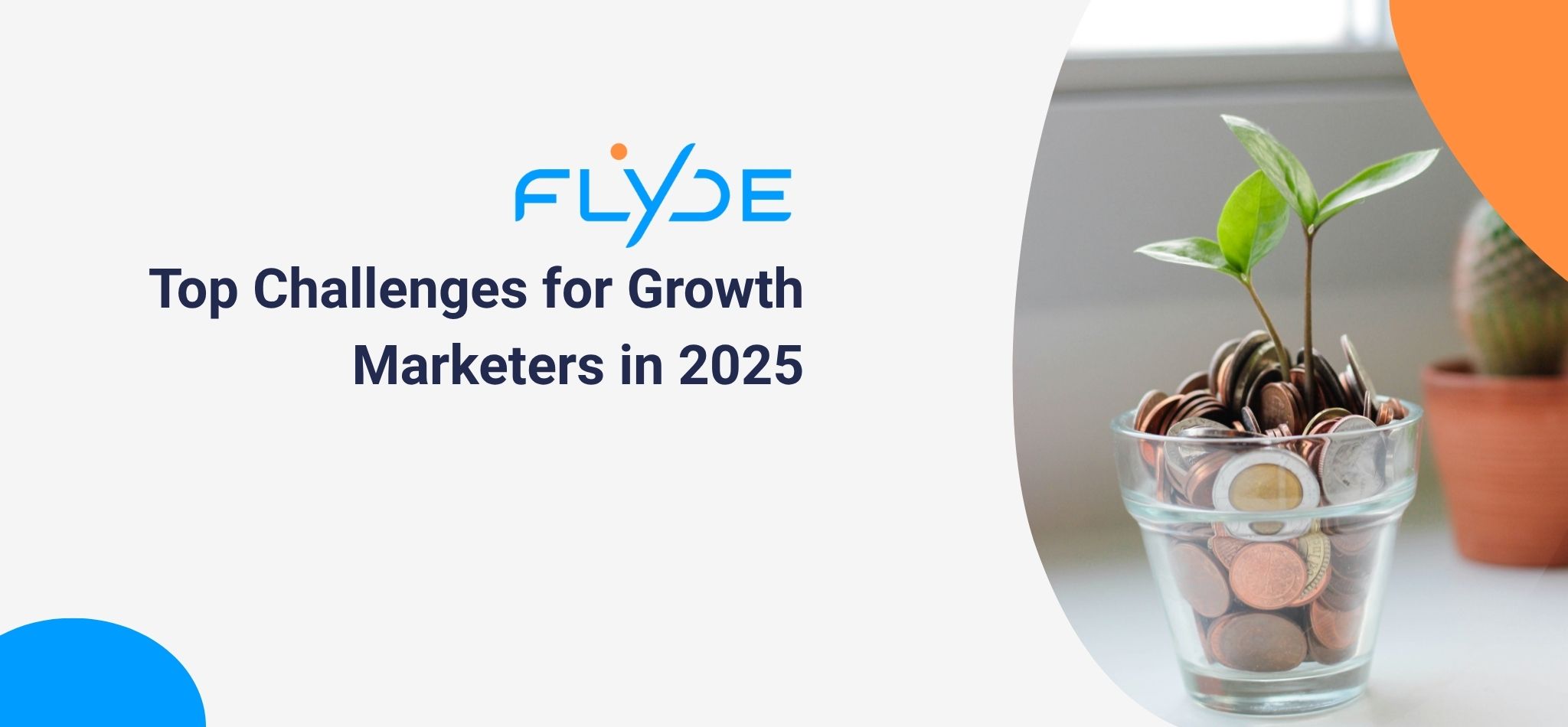
Growth marketers today need to be able to optimize campaigns across multiple channels, unify fragmented data, manage acquisition costs, and adapt to rapid industry changes. The challenge is not just executing campaigns but building a scalable, data-informed growth engine that drives sustainable results. The world of marketing has never been more complex… nor full of opportunity!
In this blog, we explore five critical challenges marketers face and how leveraging data activation and analytics can turn these obstacles into growth opportunities. By addressing these critical areas, marketing professionals can implement measured, scalable strategies that drive both immediate performance and long-term customer value.
For those who want to explore solutions to these challenges in depth, our upcoming webinar with Luis Serrano, Head of Growth for Real Madrid, offers a chance to engage directly with a growth leader. Click here for more information.
CHALLENGE 1: BALANCE SUSTAINABLE LONG-TERM GROWTH WITH SHORT-TERM GAINS
Marketing teams often face tension between demonstrating immediate results and nurturing long-term value. Sacrificing customer retention and lifetime value in favor of marketing qualified leads (MQL) or short-term revenue can create the illusion of growth while undermining sustainable performance. Advanced analytics can quantify the impact of retention versus acquisition, allowing leaders to defend their strategy with data rather than intuition. By modeling customer lifetime value alongside near-term KPIs, teams can make informed trade-offs that satisfy stakeholders without compromising long-term growth.
CHALLENGE 2: UNIFYING FRAGMENTED DATA
A single, reliable view of the customer is foundational for effective growth marketing, yet most organizations struggle with siloed systems, from CRM and ads platforms to product analytics and web tracking. Fragmentation reduces visibility and often biases measurement toward easily attributable channels.
Centralizing data enables marketers to track the full journey, uncover hidden opportunities, and deploy more precise targeting strategies. Tools that integrate data in real time and provide actionable segmentation allow for campaigns that are both sophisticated and measurable. If you are looking to build a sustainable and scalable growth strategy, unified data is an absolute must.
CHALLENGE 3: CHANNEL SATURATION AND RISING ACQUISITION COSTS
Undoubtedly many growth marketers are feeling the pressure of escalating customer acquisition costs (CAC) and formerly profitable channels becoming less cost ineffective. Growth marketers need frameworks for modeling CAC sensitivity and simulating different channel strategies to stay ahead. By forecasting cost changes and evaluating alternative acquisition levers, teams can anticipate disruptions and allocate budget dynamically, rather than reacting when profitability declines. This analytical rigor separates reactive teams from those driving consistent, scalable growth.
CHALLENGE 4: AI ADOPTION THAT ADDS TRUE VALUE
Artificial intelligence can accelerate campaign execution and uncover new insights, but its effectiveness depends on thoughtful application. Simply using AI to automate routine tasks does not differentiate a brand. Leading teams integrate AI into predictive modeling, hyper-personalization, and attribution analysis. To maximize impact, efficient algorithms must be used together with human creativity. The key is leveraging AI to provide insight and support smarter decision making rather than merely speed or volume.
CHALLENGE 5: CONTINUOUS INDUSTRY EVOLUTION
Growth marketing operates in a dynamic environment where technological, regulatory, and behavioral shifts can rapidly alter the rules of engagement. Strategies must be adaptive, incorporate scenario planning, and operate within agile measurement frameworks. Teams that continuously stress-test assumptions and adapt to emerging trends are better positioned to respond to disruptions while maintaining momentum.
LEARN MORE FROM AN INDUSTRY LEADER
The challenges of growth marketing are complex, but actionable strategies exist. Join FLYDE’s webinar with Luis Serrano, Head of Growth at Real Madrid, to explore these topics in depth. This is your chance to gain practical insights, discuss real-world solutions, and engage directly with a seasoned growth leader.
📅Wednesday, October 29, 17h CET / 9h CST
📍LinkedIn Live
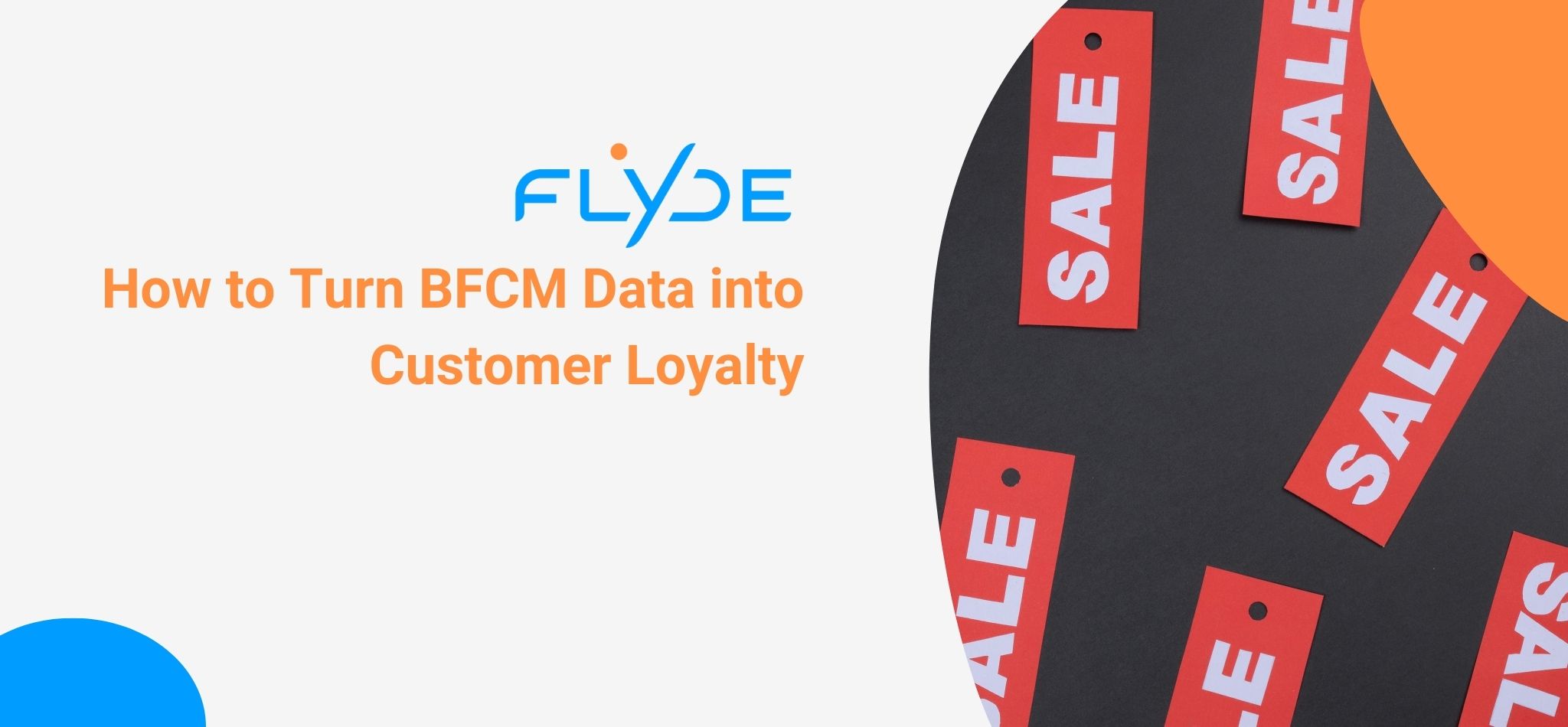
For many businesses, Black Friday–Cyber Monday (BFCM) is the most intense moment of the year for the business’s data. Traffic surges, transactions peak, and first-time buyers arrive in waves. For many brands, this weekend generates a huge portion of their annual revenue.
But the real objective shouldn’t be just to make the sale. The goal should be to convert those new buyers into long-term customers. Without a way to unify and activate data, brands often miss the opportunity to build loyalty after the sale, leaving a massive amount of valuable customer information and opportunity for growth on the table.
THE DATA CHAOS OF BFCM
During BFCM, data flows in from every direction: websites, mobile apps, paid ads, emails, and ecommerce platforms. The omnichannel nature of data sources presents a significant challenge. Customers appear under different IDs, creating fragmented and duplicated records that are almost impossible to activate for retargeting or loyalty campaigns later on. Instead of starting the new year with a stronger customer base, many brands are stuck cleaning up a data mess.
This is where a Customer Data Platform (CDP) becomes an essential tool. A CDP like FLYDE is built to handle this exact challenge by bringing all your customer data into one unified, intelligent platform.
HOW CAN FLYDE HELP?
Real-Time Identity Resolution
One of the most pressing technical challenges of BFCM data management is identity resolution. With traffic and transactions peaking, businesses need a way to link anonymous browsing sessions to known customer profiles.
A CDP like FLYDE combines first-party data such as emails, phone numbers, and loyalty IDs with anonymous digital signals. By resolving identities in real time, the platform eliminates duplicate records and builds a single, accurate profile of each customer. This ensures that even when activity spikes, businesses maintain a complete and coherent view of their customers’ journeys.
Smarter Segmentation
Not all BFCM buyers are equal. Some are loyal customers taking advantage of promotions. Others are deal hunters who may never return without the right follow-up. Treating both groups the same reduces efficiency and limits retention.
McKinsey research shows that companies excelling at customer personalization generate 40% more revenue from those activities than their peers. Advanced segmentation supported by a CDP enables businesses to separate high-value customers from bargain-driven shoppers. For example, FLYDE allows marketers to distinguish between customers who only purchase discounted items and those who also explore full-price collections. This insight shapes tailored post-purchase communication that increases the chance of long-term retention.
Omnichannel Activation
Clean, segmented data is only valuable when it can be activated across the right channels. Modern CDPs sync enriched profiles with platforms such as Meta Ads, Google Ads, email marketing tools, and SMS systems. This allows marketing teams to stop wasting spend on customers who already converted, deliver personalized journeys in the channels where customers are most active, and build targeted retargeting campaigns that deliver higher returns.
By closing the loop between data collection, unification, and activation, businesses ensure that the customer relationships formed during BFCM extend beyond a one-time transaction.
A PRACTICAL EXAMPLE
A consumer electronics retailer uses FLYDE ahead of BFCM to connect its Shopify store, email marketing platform, and Meta Ads. They create unified profiles for 120,000 customers and segment them by purchase margin, that is, those who buy discounted items versus those who pay full price.
After BFCM, the retailer can use FLYDE to trigger automated post-purchase journeys:
- High-value buyers receive loyalty rewards and exclusive early access to new products.
- One-time bargain hunters receive special re-engagement offers to encourage a second purchase.
Impact:
- Reduced duplicate ad spend.
- Higher retention rate for BFCM buyers compared to the previous year.
- Increased email engagement with tailored post-BFCM messaging.
READY TO GET STARTED?
BFCM is more than just a sales spike; it’s a data spike. Without a unified view of your customers, you’re missing a massive opportunity for long-term growth. With a CDP like FLYDE, brands can transform this sales surge into structured intelligence, ensuring they build a loyal customer base instead of just generating short-term revenue.
Ready to maximize your next BFCM? Contact us at FLYDE to book a demo and see how a our intuitive CDP can revolutionize your BFCM data strategy.
Start taking control of your data today.
Schedule a meeting with one of our experts and discover how FLYDE can help your company achieve its goals.
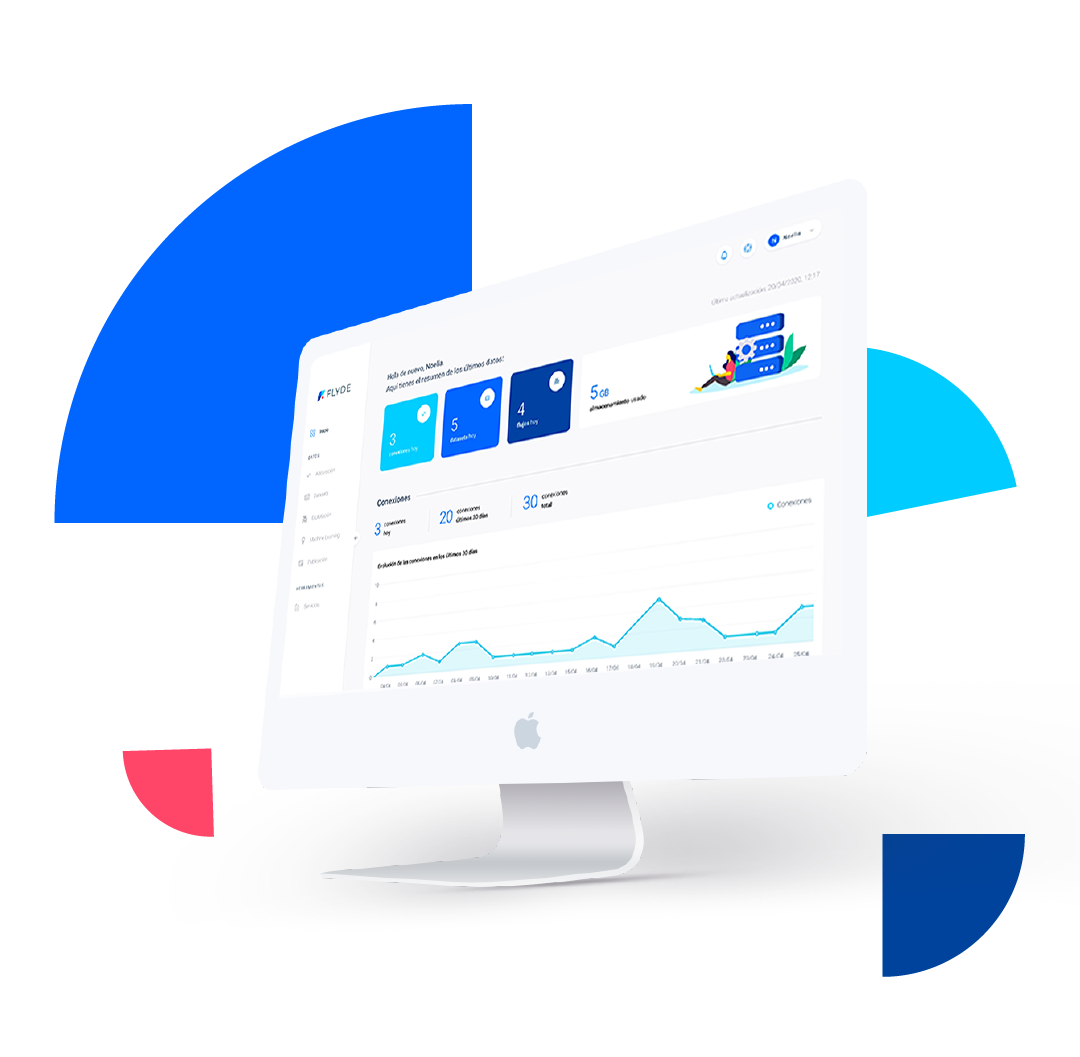
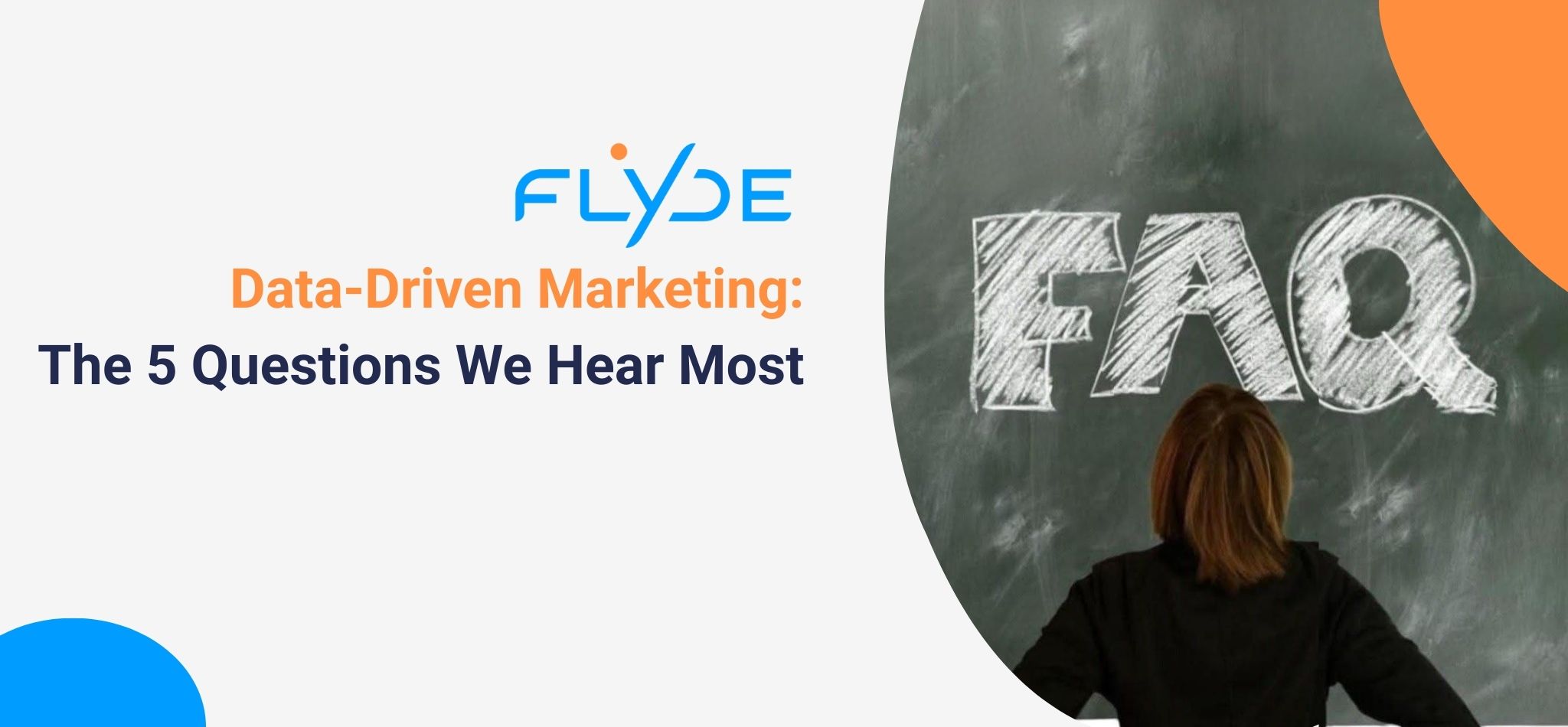
At FLYDE, we talk with marketing teams every day about data, performance, and the customer journey. We often hear the same questions, so we’ve gathered the five most common ones, with clear answers and links to our blogs for more in-depth information.
1. WHAT IS MARKETING MIX MODELING (MMM) AND HOW CAN WE IMPLEMENT IT?
Marketing Mix Modeling (MMM) is a statistical technique that helps you understand which marketing channels are actually driving results. It analyzes variables like advertising, pricing, promotions, and seasonality to measure their impact on sales, conversions, and revenue. It uses historical, aggregated data, so it doesn’t rely on cookies or user-level tracking. That’s why we’re seeing more and more marketing teams turn to MMM.
More information on MMM and how to implement it:
👉 What is Marketing Mix Modeling?
2. CAN WE IDENTIFY ANONYMOUS WEBSITE USERS WITH NAVIGATION FINGERPRINTING AND IS THEIR CONSENT NEEDED?
Browser fingerprinting is a technique that can identify a device based on its technical characteristics (browser, screen resolution, language, etc.) without installing cookies. It allows you to track anonymous users across multiple sessions to better analyze user behavior in the early stages of the customer journey.
More information on fingerprinting and how to ensure user privacy:
👉 Navigation Fingerprinting: Tracking Anonymous Users Without Cookies
3. WHAT IS RFM ANALYSIS AND HOW DOES IT IMPROVE CUSTOMER SEGMENTATION?
RFM analysis is a statistical technique that involves analyzing customer data in terms of Recency (how recently they purchased), Frequency (how often they purchase), and Monetary value (how much they spend) to gain insights into the behavior of different customer groups. These groups can be used to optimize customer segmentation, improve retention, and maximize ROI and Customer Lifetime Value (CLV).
More information on RFM analysis and the role of a CDP:
4. WHAT IS A CUSTOMER DATA PLATFORM (CDP)?
A CDP unifies data from multiple sources, organizes it into unique profiles, and makes it actionable in real time. A CDP is a key component of modern data-driven marketing strategies.
We explain this in more detail and outline the benefits a CDP can bring to your business:
👉What is a Customer Data Platform (CDP)?
5. WHAT IS THE PROCESS FOR IMPLEMENTING A CDP?
FLYDE is an intuitive and simple platform. It can be implemented without the need for a specialized technical team. We invite you to request a demo and we can show you the process in detail.
Schedule a demo:
DO YOU HAVE ANOTHER QUESTION ABOUT DATA-DRIVEN MARKETING?
Contact us to let us know, and we’ll address it in a future post. Plus, if you want to see how a CDP can improve your data-driven marketing strategy, request a demo with FLYDE and we can discuss.
Comienza a tomar el control de tus datos desde hoy.
Agenda una reunión con uno de nuestros expertos y descubre cómo FLYDE puede ayudar a tu empresa a alcanzar sus objetivos.

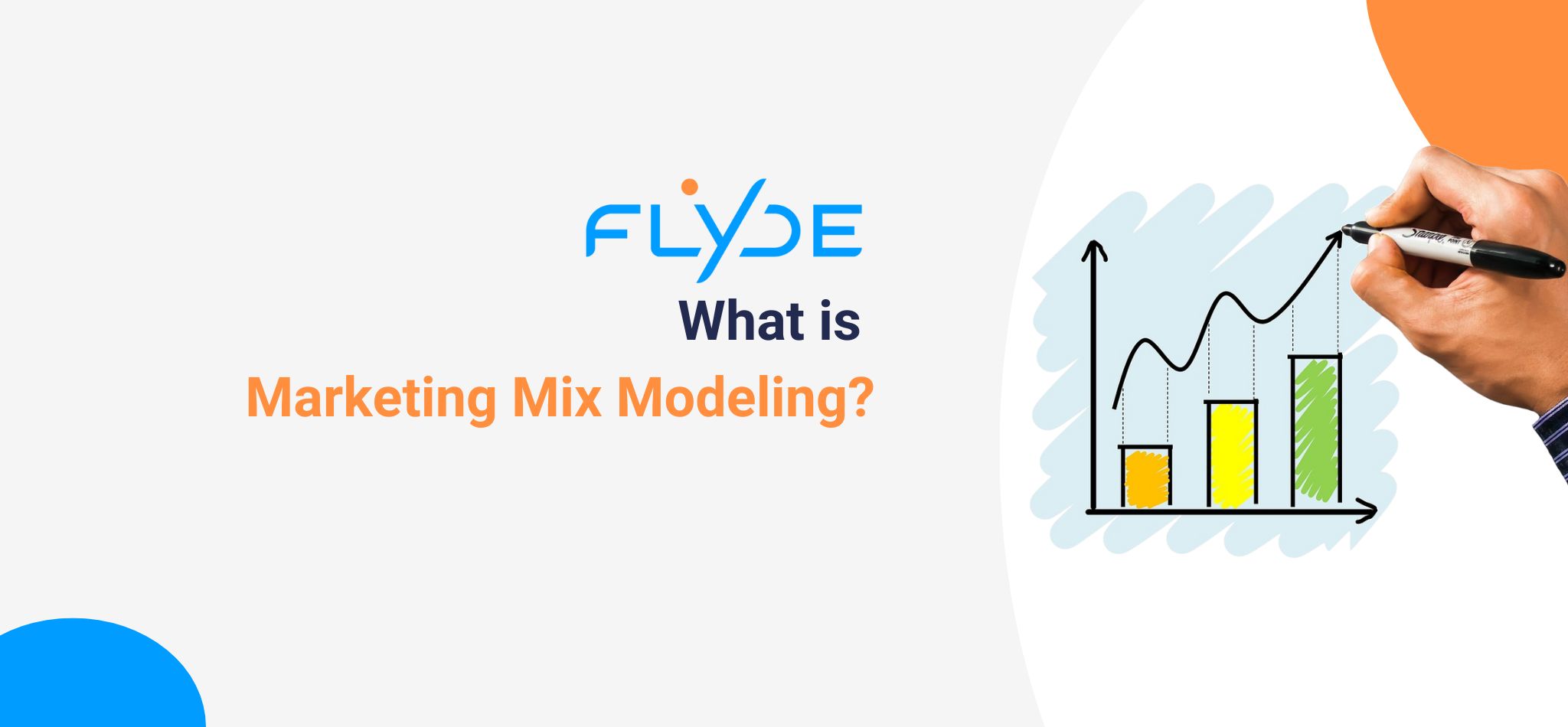
Marketing Mix Modeling is a statistical technique that helps marketers understand how different variables such as advertising, pricing, promotions, and seasonality impact business outcomes like sales, conversions, or revenue.
In simpler terms, MMM tells you how much each part of your marketing mix contributes to your results. It is based on historical, aggregated data, without requiring cookies or user-level tracking.
HOW DOES MMM WORK?
MMM analyzes data over time, typically at least two years, to isolate the incremental impact of each factor. It can measure both online and offline efforts such as:
- Paid search, social, and display advertising
- Traditional media like TV, radio, and print
- Promotions and pricing strategies
- Seasonality and external events like weather or competitor activity
By modeling these variables together, MMM provides attribution at the channel level and helps marketers understand the return on the investment (ROI) made in each channel.
WHY IS MMM MAKING A COMEBACK?
Marketing departments are increasingly accountable for justifying every cent they spend and demonstrating clear ROI on their activities. With budgets tightening and the deprecation of third-party cookies looming, many brands are looking back to a powerful, proven solution: Marketing Mix Modeling (MMM).
With the rise of user-level tracking via cookies and clickstream data, MMM took a back seat to multi-touch attribution (MTA). MTA is a marketing measurement model that assigns credit to multiple touchpoints along a customer’s journey to determine which channels and interactions influenced a conversion. Digital tracking, however, is facing significant obstacles due to privacy regulations. As a result MMM is becoming more relevant, because it uses aggregated data as opposed to user-level tracking, and covers both online and offline channels.
MMM VS. MULTI-TOUCH ATTRIBUTION
| Feature | MMM | MTA |
|---|---|---|
| Attribution type | Top-down (channel level) | Bottom-up (user level) |
| Data required | Aggregated, historical | User level, cookie-based |
| Works offline | Yes | No |
| Privacy compliant | Yes | Depends on data practices |
Rather than choosing one or the other, many brands are now combining MMM and MTA. MMM provides strategic, high-level planning while MTA supports tactical, in-the-moment optimization.
HOW FLYDE FITS IN: THE ROLE OF A CUSTOMER DATA PLATFORM (CDP)
At FLYDE, we help businesses unify and activate their customer data. This includes making the most of aggregate-level signals, which is where a Customer Data Platform (CDP) plays a crucial role in enhancing MMM.
A CDP is a centralized system that collects and unifies customer data from various sources (online, offline, behavioral, transactional, demographic) into a single, comprehensive customer profile. While MMM focuses on aggregate, historical data for channel-level insights, a CDP complements this by:
- Centralizing all marketing and sales data: A CDP acts as the single source of truth for all your customer-related data, making it easier to gather the diverse datasets needed for robust MMM. This includes data from CRM, ERP, web analytics, advertising platforms, and more.
- Cleaning and enriching datasets for modeling: CDPs are designed to ingest, cleanse, and standardize data from disparate sources. This ensures the data fed into MMM models is accurate, consistent, and complete, leading to more reliable insights. A CDP can also enrich data with additional attributes, improving the depth of your analysis.
- Once MMM provides insights on channel effectiveness and optimal budget allocation, a CDP can act as the bridge to activate these insights. It allows you to push segmentation and targeting recommendations derived from MMM directly to your ad platforms, email marketing tools, and CRM for more effective campaign execution.
- While MMM works with aggregated data, a CDP can provide a richer understanding by linking these aggregate insights with more granular behavioral data. Even without cookies, techniques like navigation fingerprinting (which anonymously tracks user journeys based on browser characteristics and other non-personally identifiable information) can be ingested by a CDP. This allows for a holistic view, where broad MMM findings can be refined and informed by observed customer behaviors, enabling more precise targeting and personalization within privacy boundaries.
This means smarter planning without compromising privacy and better orchestration of omnichannel efforts, from the first anonymous visit to long-term customer retention.
Marketing Mix Modeling aligns with the marketing industry’s most predominant trends: smarter measurement, responsible data use, and data-driven channel strategies.
HOW FLYDE CAN HELP
Want to learn more about how FLYDE supports MMM and helps unlock real omnichannel impact?
Contact us to schedule a meeting to discuss how a Customer Data Platform del Cliente (CDP) like FLYDE can enable you to implement MMM in your business.
Start taking control of your data today.
Schedule a meeting with one of our experts and discover how FLYDE can help your company achieve its goals.


Longer days. Different routines. Out-of-office replies. Summer changes everything, including your customers’ behavior.
People shop at different hours, dine in new places, travel more (or less), and respond to different channels. The usual patterns of when, where, and how people buy can shift significantly. If your marketing is based on static segments or last year’s assumptions, you risk missing key moments of engagement.
The good news is that with a strong data strategy (and a Customer Data Platform like FLYDE) summer becomes an opportunity. You can fine-tune your segmentation, messaging, and timing to reach customers at the right moment, through the right channel, with offers that align with their seasonal behavior.
PREDICT WHAT’S NEXT WITH BEHAVIOR-BASED MODELS
Customer journeys are rarely linear. In summer, they’re even more unpredictable. FLYDE helps bring clarity to seasonal shifts by:
- Unifying real-time customer behavior across channels like web, email, mobile app, social media, and in-store POS systems.
- Applying predictive models to anticipate return likelihood, product preferences, or even travel planning windows.
- Segmenting audiences dynamically based on changes in browsing, booking, or purchase behavior.
Instead of reacting to changes after they happen, FLYDE allows you to anticipate them, so you’re always one step ahead.
HYPERPERSONALIZATION OF MESSAGING AND OFFERS
Seasonal relevance matters. Whether it’s travel planning or heatwave-driven impulse buys, being able to respond quickly makes the difference. With FLYDE, you can activate insights in real time to:
- Deliver personalized promotions based on forecasted demand and individual behavior.
- Reallocate ad spend dynamically when a campaign underperforms with specific segments.
- Automate email and advertising campaigns triggered by behavior, not just by a marketing calendar.
This means more relevant interactions, improved engagement rates, and smarter use of your marketing budget.
INDUSTRY IN FOCUS: HOTELS, RESTAURANTS, AND RETAIL
Hotels
A busy hotel could analyze in-stay guest behavior during the peak summer season. By unifying data from their app, restaurant bookings, spa services, etc., they can identify key patterns—such as which guests are most likely to book add-ons like late checkouts, poolside dining, or spa treatments. This allows them to activate targeted in-stay messaging tailored to each guest’s profile, promoting high-margin services at the optimal moment (for example, a post-check-in spa offer or late lunch promo after a pool reservation). As a result, they can expect to see not only an increase in revenue from add-ons but also higher satisfaction scores in post-stay surveys, which in turn can translate into more returning guests.
Restaurants
A high-traffic restaurant might notice that weekday lunch volume drop during the summer months, while evening and weekend group bookings rose. If they identify this pattern early, they can adjust their marketing strategy, and promote group dining offers around local events.
Retail
A fashion retailer may notice that in summer, browsing behavior shifts from desktop to mobile, particularly in the afternoons. Using the behavioral data available with a CDP, they can adapt campaign timing and creative formats to favor mobile-first formats in order to increase click-through and conversion rates.
MAKE SEASONAL SHIFTS YOUR COMPETITIVE ADVANTAGE
Many businesses feel the effects of seasonal changes, but few are ready for them. A Customer Data Platform del Cliente (CDP) like FLYDE
helps you move beyond static insights by connecting and activating your customer data in real time. With unified profiles and predictive intelligence, you can identify seasonal patterns early and respond with agility.
Instead of playing catch-up, you’re positioned to anticipate behavior and deliver personalized experiences that reflect real-time needs, whether it’s summer, back-to-school, or the holiday season.
Let’s make your data work harder this summer, and every season after. Contact us for a personalized demo of how to turn customer behavior shifts into strategic opportunities.
Start taking control of your data today.
Schedule a meeting with one of our experts and discover how FLYDE can help your company achieve its goals.

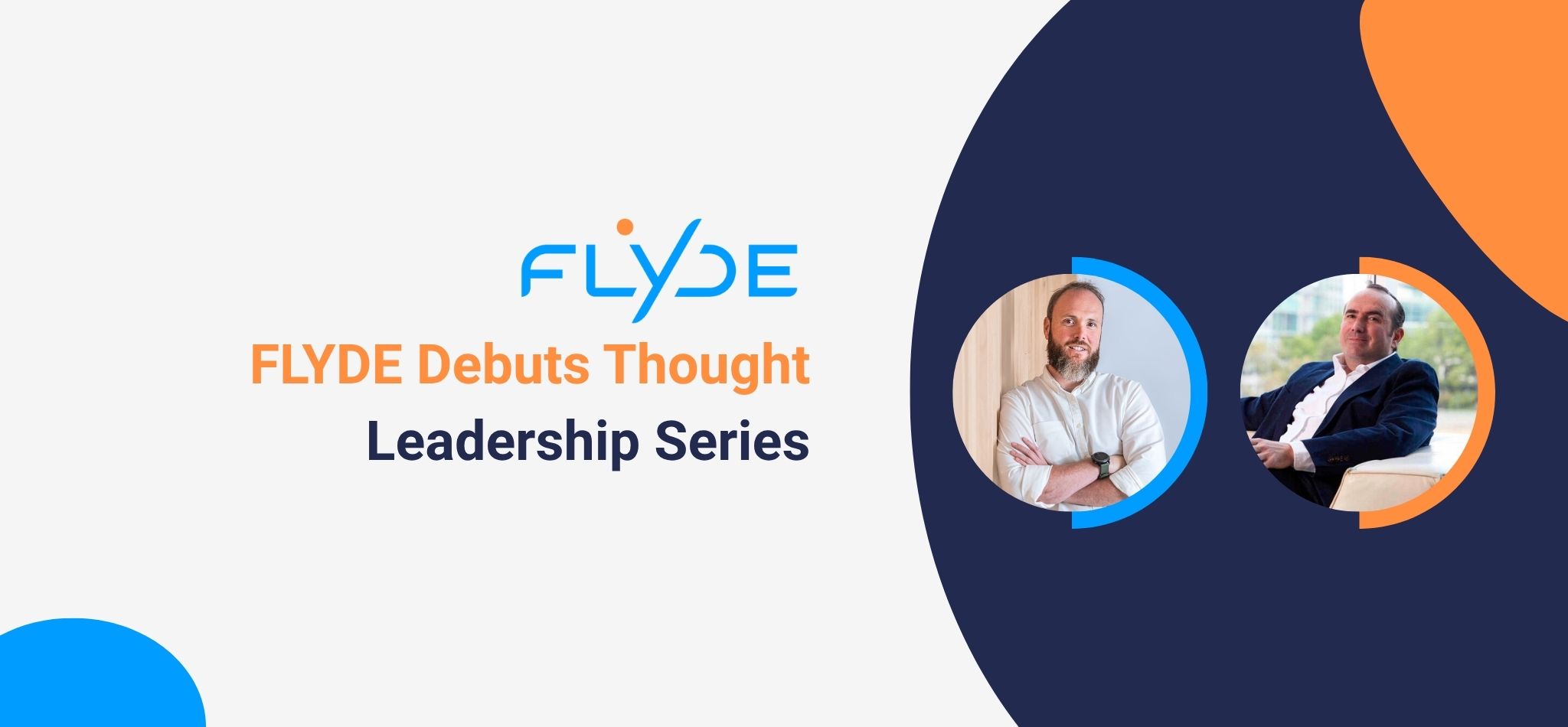
MADRID, SPAIN – June, 11, 2025 – FLYDE, a customer data platform offering an easy-to-use solution for businesses to unify fragmented data and drive growth, announces the successful launch of its new thought leadership series, FLYDE Talks. The inaugural event, entitled, “The Challenge of Attribution in Omnichannel Marketing,” drew nearly 200 registrants across Europe and Latin America, signaling strong demand for discussions on practical, data-driven marketing.
Held on June 5, 2025 via LinkedIn Live, the virtual event featured digital marketing expert Andrés Azpilicueta, broadcasting from Mexico City, Mexico alongside Paco Herranz, CEO of FLYDE, based in Madrid, Spain.
Marketers and business leaders tuned in for a candid conversation on the limitations of traditional attribution methods, and how the centralization of customer data can help address the challenges of attribution in omnichannel marketing.
“We are thrilled with the overwhelming response to our first FLYDE Talks event,” said Paco Herranz. “The challenge of attribution in omnichannel marketing is a critical issue for businesses seeking efficiency and growth. Sparking interest among nearly 200 engaged professionals reaffirms the relevance of the series in driving meaningful conversations around data-driven marketing strategies.”
A DEEPER LOOK: INSIGHTS FROM THE LIVE DISCUSSION
The talk explored how marketers can go beyond siloed data and surface-level campaign metrics to fully understand customer journeys and drive profitable decisions. Topics discussed included:
Key Trends in Digital Marketing
- Artificial Intelligence: Its ability to process data and empower human teams is undeniable.
- Zero-Based Budgeting: Requires justifying every euro spent, reinforcing the need for truly omnichannel ROI measurement.
The GA4 Challenge and the End of Cookies
- The shift to Google Analytics 4 and the phasing out of third-party cookies can cause differences of up to 30% in reported sales.
- Defending the budget requires both tactical metrics (by channel) and strategic metrics (a global view).
- FLYDE adds a first-party tracking layer to audit and correct these discrepancies.
Attribution Beyond the Last Click
- Every touchpoint adds value. Limiting to “last click” can lead to misguided decisions.
Strategic Metrics and Segmentation
- Go beyond Cost Per Acquisition (CPA): focus on Customer Lifetime Value and how it varies by type of customer (repeat, occasional, etc.).
- Not all attributes weigh equally: advanced segmentation optimally prioritizes each factor.
- Centralize your data to build the “golden record”: the foundation for reliable attribution and truly personalized marketing.
FLYDE TALKS: A PLATFORM FOR INDUSTRY DIALOGUE
FLYDE Talks is designed to be a recurring series spotlighting challenges (and solutions) facing modern marketing and growth teams. Each event will feature live case studies, expert guests, and real-time walkthroughs across industries like retail, sports, travel and hospitality, and SaaS.
“FLYDE Talks represents a vital initiative for us as a company to create an open space where marketing and data professionals can share knowledge, ask tough questions, and explore innovative strategies together,” said Katie Gortz, Marketing Manager at FLYDE.
FLYDE Talks will resume in September and forthcoming information will be published through the company’s LinkedIn page.
With regard to FLYDE Talks Episode 2, Azpilicueta hinted: “There’s huge potential in showing how a football club, for example, can use data to tailor experiences for different types of fans—casual buyers, season-ticket holders, international shoppers.”
ABOUT FLYDE
FLYDE is a customer data platform built for teams who want full control over how data flows, performs, and drives revenue. By integrating online and offline sources into a single, actionable view, FLYDE helps businesses optimize campaigns, boost retention, and connect with high-value audiences in real time. Contact FLYDE for a demo to learn more.
Start taking control of your data today.
Schedule a meeting with one of our experts and discover how FLYDE can help your company achieve its goals.

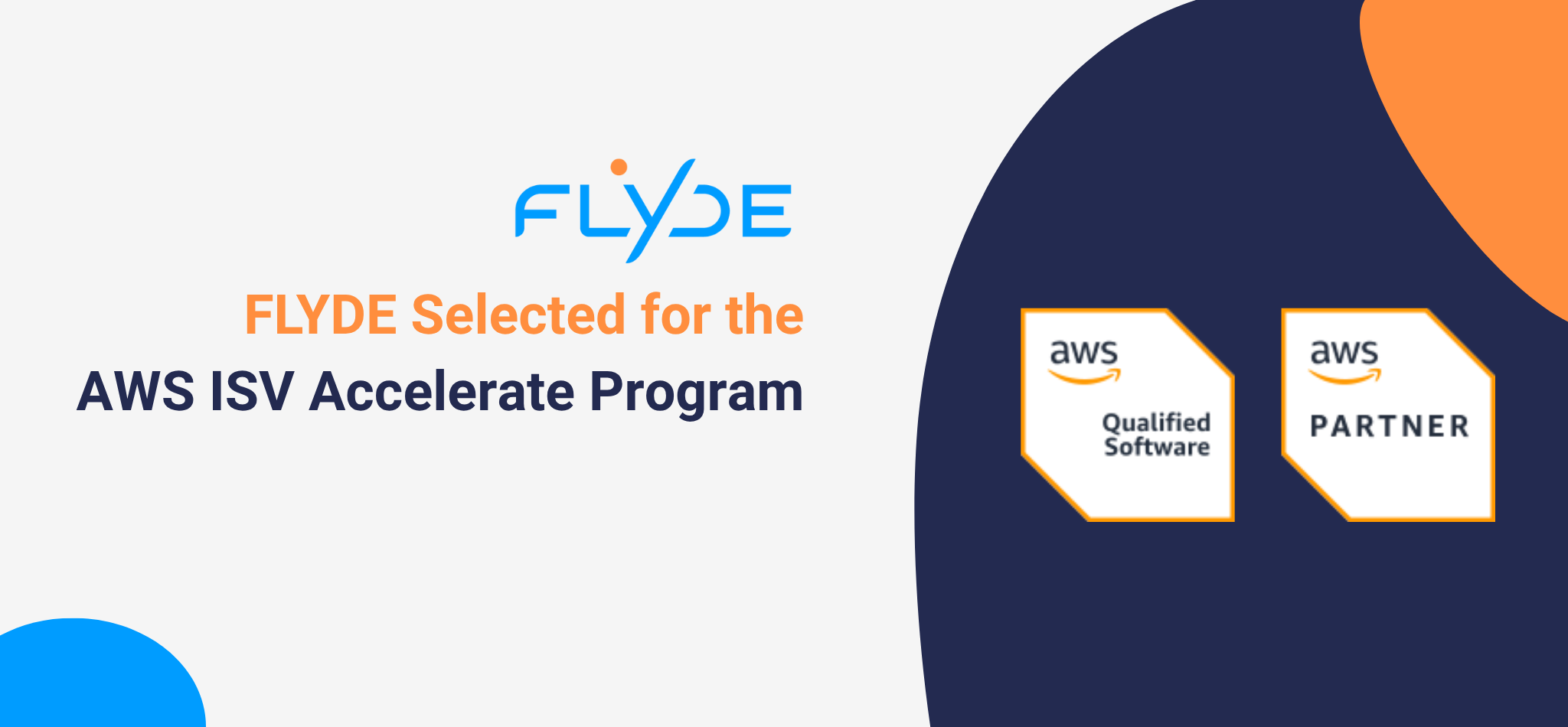
FLYDE is proud to announce its acceptance into the Amazon Web Services (AWS) Independent Software Provider (ISV) Accelerate Program, a co-sell initiative for AWS Partners that provide software solutions that run on or integrate with AWS. This milestone reflects FLYDE’s technical excellence, customer commitment, and alignment with AWS best practices—following a rigorous vetting and approval process.
The AWS ISV Accelerate Program is an exclusive program for software providers that meet high technical and business standards. Gaining acceptance into the program means that FLYDE’s platform has been carefully evaluated by AWS for its scalability, security, and performance within the AWS ecosystem.
“This isn’t a badge you simply apply for—it’s earned,” said Paco Herranz, CEO of Flyde. “Joining the AWS ISV Accelerate Program is the result of months of architectural reviews, documentation, and validation. It confirms that our infrastructure is solid and that we’re ready to grow with AWS by our side.”
FLYDE also underwent the AWS Well-Architected Framework review, which evaluates design across a series of critical pillars: operational excellence, security, reliability, performance efficiency, cost optimization, and sustainability. This designation validates that FLYDE not only runs efficiently on AWS, but also follows cloud-native best practices for secure and scalable data infrastructure. It’s further assurance that FLYDE is built on a foundation of robust, resilient, and secure cloud infrastructure.
WHAT DOES THIS MEAN FOR FLYDE’S CLIENTS?
- Faster, more secure deployments thanks to AWS-native architecture
- Improved scalability for growing businesses
- New channels of support and innovation via collaboration with AWS sales teams
- Confidence in as a thoroughly vetted solution, built to perform at enterprise standards
FLYDE’s inclusion in the ISV Accelerate program also paves the way for deeper integrations with AWS services and access to joint go-to-market opportunities through Marketplace, which will ultimately benefit clients with faster implementations and enhanced product support.
Read more about FLYDE’s AWS-native CDP and how it unifies customer data across omnichannel environments,
ABOUT FLYDE
FLYDE is a Customer Data Platform (CDP) that unifies data from multiple sources—such as eCommerce, in-store purchases, CRM systems, email campaigns, and advertising platforms—into a single, comprehensive customer profile. Using ML/AI-powered predictive models, FLYDE processes this data in real-time, to empower businesses to anticipate customer behaviors, preferences, and trends, boost acquisition, lifetime value (LTV), and retention.
Contact us for a demo and let us show you how FLYDE makes data accessible and actionable, empowering businesses to deliver smarter, more personalized experiences.
Comienza a tomar el control de tus datos desde hoy.
Agenda una reunión con uno de nuestros expertos y descubre cómo FLYDE puede ayudar a tu empresa a alcanzar sus objetivos.


In a perfect world, a customer clicks on an ad, falls in love with your product, and converts on the spot. You know exactly which campaign worked, which channel gets credit, and where to increase your ad spend. Easy.
But we don’t live in a perfect world. The customer journey isn’t single-channel or linear. We live in the age of omnichannel marketing. The reality is that a single purchase might be influenced by a Google search, a TikTok video, a webinar, a promotional email, or a conversation with your sales team.
Attribution—figuring out which touchpoints actually matter in the buyer’s journey—is no longer simple. It’s a messy, multi-source puzzle. And without solving it, you risk spending your budget in the wrong places.
So, let’s dive in and examine what attribution really means in omnichannel marketing campaigns and what challenges we face as marketers to assign credit where credit is due.
WHAT IS ATTRIBUTION?
At its core, attribution is about assigning credit to each step that helps take a customer from “just looking” to “just bought.”
In single-channel or linear journeys, this used to be easy. But today, marketers rely on a mix of digital and offline channels working together, which means that the process of attribution has had to evolve.
Let’s look at a few common attribution models:
- First-touch: Gives all credit to the first interaction. If we want to focus on awareness metrics, this is a great approach, but it offers little insight in terms of conversions.
- Last-touch: Credits the final click before a conversion. Many platforms use this as the default model, but it represents an oversimplification of the customer journey.
- Linear: Spreads credit evenly across all touchpoints. Here, the whole journey is taken into account, but not very strategically.
- Time-decay: Gives more credit to recent touchpoints. This model is well-suited to long nurture cycles.
- U-shaped (position-based): Emphasizes the first and last touchpoints, with less credit to the middle. Here, there is an emphasis on the awareness and decision stages of the funnel, but the model is apt to under-credit important engagement actions.
- Data-driven: Uses machine learning to assign weights based on actual conversion data. This model is ideal—but requires strong data hygiene and scale.
Each model has its own advantages and its own bias. In complex, omnichannel campaigns with many different touchpoints, it becomes increasingly important to move beyond simplistic models and embrace AI-powered attribution, which can analyze massive, messy datasets and zero in on what is driving conversions.
WHY DOES ATTRIBUTION GET COMPLICATED IN OMNICHANNEL CAMPAIGNS?
In the world of omnichannel marketing, the customer journey rarely follows a predictable path. The customer journey nowadays is non-linear, fragmented, and often, a portion of the journey is undertaken while the user is still anonymous.
Here’s why attribution is so tricky today:
- Device-hopping behavior: Your lead might see an Instagram ad on a mobile, Google your product on a laptop, and sign up for your newsletter from a desktop at work. The right tracking set-up is essential for connecting the dots.
- Walled gardens: Platforms like Meta, Google, and Amazon often don’t share data with each other—or with you! In these cases, each platform may allow advertising and data analysis within its own ecosystem using proprietary attribution and tracking methods, while limiting access to raw data for export to other platforms.
- Offline influences: Sales calls, print materials, events, or word-of-mouth are all powerful but hard to track.
- Privacy regulations: With the deprecation of third-party cookies and tighter data regulations, user-level tracking is more limited, making granular attribution even more challenging.
The result? A lot of guesswork and misallocated spending.
HOW TO IMPLEMENT ATTRIBUTION STRATEGIES FOR OMNICHANNEL MARKETING CAMPAIGNS
The key to approaching attribution for omnichannel marketing is to stop aiming for perfect attribution—and start aiming for actionable insight.
Here’s how to get started:
- Unify your tracking setup:
- Implement clean, consistent UTM parameters
- Your CRM and ad platforms must be connected. A Customer Data Platform (CDP) like FLYDE can bring it all together (more on that later)
- Invest in smarter analytics:
- Develop funnel-based dashboards tied to your KPIs
- Implement machine learning models if your data volume allows
- Set realistic expectations:
- Attribution will never be 100% accurate
- Focus on directional insight that can inform your strategic decisions
- Align attribution analysis to business outcomes (not just clicks)
Instead of chasing perfection, chase progress. Map the journeys, unify the data, and use a tool like FLYDE to reveal insight. The goal isn’t to give perfect credit; it’s to make smarter, more confident decisions.
FLYDE’S VISION ON SMARTER ATTRIBUTION
To address these omnichannel challenges and the need for a unified view, a Customer Data Platform (CDP) like FLYDE becomes essential for consolidating data from various sources.
FLYDE centralizes data from touchpoints across paid media, CRM, social, email, web navigation, and offline events. Whether you’re working with dozens of fragmented sources or just trying to get a full view of the customer journey, FLYDE brings your data together to offer clarity and insight.
Here’s a real-world example:
Imagine you run a lead-gen campaign using a CPC paid search campaign in Google, Meta ads, a product webinar, and follow-up email flows. With FLYDE:
- All touchpoints are stitched together—even across platforms.
- You can see how many leads saw an ad and attended the webinar.
- You can compare performance across acquisition and nurture phases.
- Attribution is based on your journey logic, not just Google’s last-click default.
This kind of transparency doesn’t just look good in reports—it drives better decision-making. When you know what’s working, you can double down. When something’s underperforming, you can pivot fast. Ultimately, effective attribution leads to optimized advertising spend, a deeper understanding of customer behavior, and improved ROI.
Contact us for a demo and we can show you how FLYDE approaches omnichannel attribution in our easy-to-use Customer Data Platform.
Comienza a tomar el control de tus datos desde hoy.
Agenda una reunión con uno de nuestros expertos y descubre cómo FLYDE puede ayudar a tu empresa a alcanzar sus objetivos.

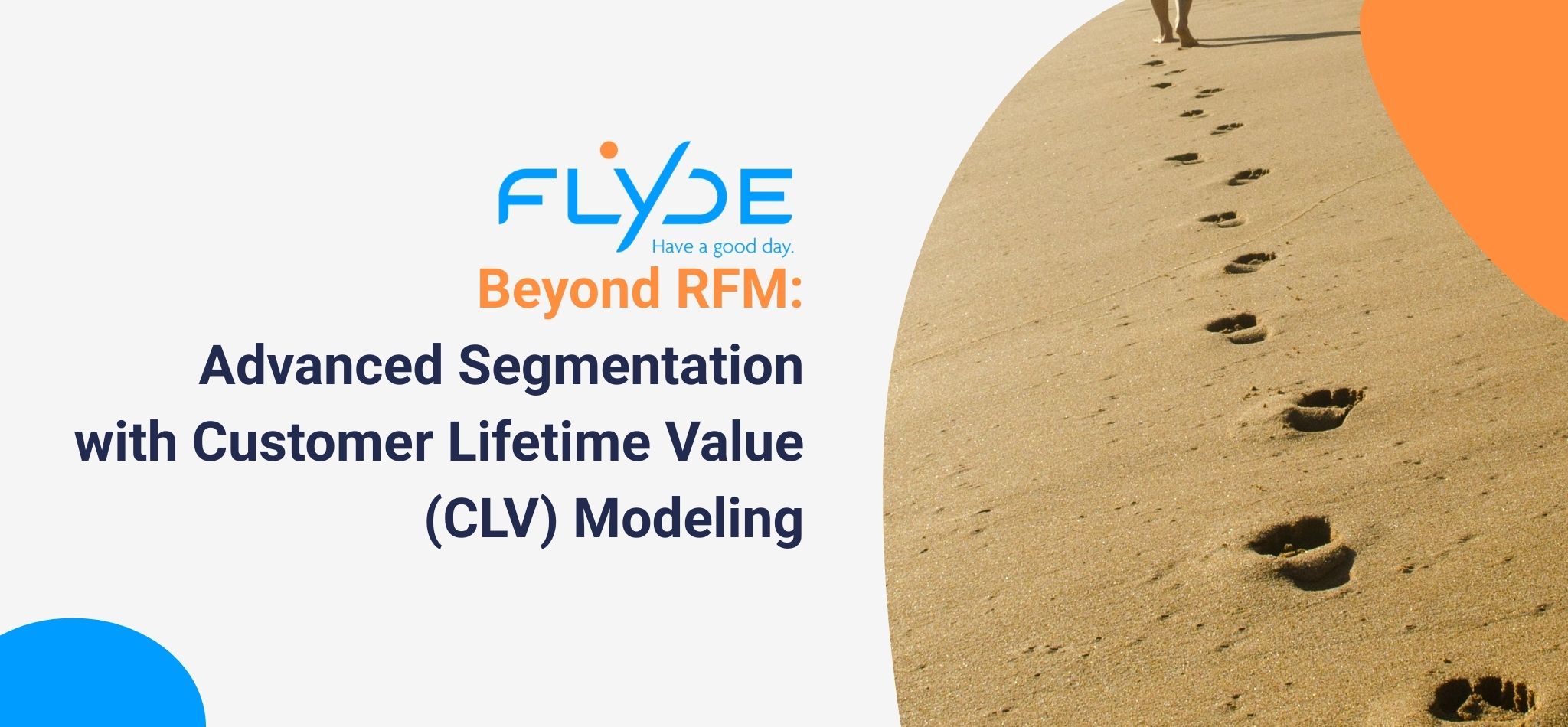
In the world of customer analytics, RFM analysis has long been a favorite for segmenting customers based on their Recency, Frequency, and Monetary behaviors. While RFM provides a solid foundation, many businesses are looking for more advanced segmentation techniques to capture the full picture of customer behavior. One such method is Customer Lifetime Value (CLV) modeling, which estimates the total revenue a customer is likely to generate over their entire relationship with your brand.
In this post, we’ll explore how CLV modeling works, its benefits, and how it complements—or even surpasses—traditional RFM analysis.
WHAT IS CUSTOMER LIFETIME VALUE (CLV)?
Customer Lifetime Value (CLV) is a prediction of the net profit attributed to the entire relationship with a customer. CLV is forward-looking. It allows marketers to estimate not only who your best customers are today, but also who will be most valuable in the future.
Key Components of CLV:
- Purchase Frequency: How often a customer is expected to buy.
- Average Order Value: The typical value of each transaction.
- Customer Lifespan: The estimated duration of the relationship.
- Profit Margin: The profitability of each sale.
By incorporating these elements, CLV modeling provides a dynamic and comprehensive view of customer value.
WHY MOVE BEYOND RFM?
RFM analysis is great for quick segmentation, but it has its limitations:
- Historical Focus: RFM is inherently backward-looking. It categorizes customers based on past behavior without necessarily predicting future potential.
- Lack of Predictive Power: While RFM can identify segments, it doesn’t forecast future revenue or profit, which is essential for long-term planning.
- Simplistic Assumptions: RFM treats all transactions equally, ignoring nuances like evolving market conditions.
CLV modeling, on the other hand, addresses these gaps by providing actionable insights into future customer value.
HOW TO IMPLEMENT CLV MODELING FOR ADVANCED SEGMENTATION
- Data Collection and Integration: Start by gathering comprehensive customer data—transaction histories, behavioral data, and engagement metrics. A Customer Data Platform (CDP) like FLYDE can integrate data from multiple sources, ensuring you have a unified view of customer interactions.
- Define the CLV Model: Start by selecting a CLV model that aligns with your business goals and data maturity. The most common approaches include:
- Historical CLV: Based on past purchase behavior, this model helps estimate future value using existing transaction data.
- Predictive CLV: Uses statistical or machine learning techniques to forecast future customer value based on historical trends, behavioral signals, and engagement patterns.
At FLYDE, we use a hybrid approach—combining both historical and predictive modeling to get the best of both worlds. Historical CLV powers real-time calculations, giving you an up-to-date view of current customer value. Predictive CLV goes further, projecting customer value over 6, 12, 18, and 24 months to support long-term planning and proactive engagement strategies.
- Segment Based on CLV: Once you have calculated the CLV for each customer, you can segment your audience into groups such as:
- High CLV Customers: Your most valuable customers deserve personalized engagement and loyalty programs.
- Mid-Tier Customers: Those with moderate potential who could be nurtured to increase their value.
- Low CLV or At-Risk Customers: Customers who might require re-engagement strategies or cost-effective campaigns to improve retention.
- Tailor Marketing Strategies: With your segments defined, develop targeted strategies for each group. For instance:
- High CLV: Offer exclusive deals, early access to new products, or premium support.
- Mid-Tier: Encourage upsells and cross-sells through personalized recommendations
- Low CLV: Implement re-engagement campaigns or educational content to drive increased interaction.
- Measure and Refine: Use performance metrics such as conversion rates, retention rates, and overall revenue growth to continuously evaluate your CLV segments. Regularly update your model with fresh data to keep your segmentation relevant.
THE BENEFITS OF CLV-BASED SEGMENTATION
- Resource Optimization: By focusing on high-value customers, you can allocate your marketing budget more effectively.
- Enhanced Personalization: Tailored messaging based on predicted future value fosters stronger customer relationships.
- Improved Forecasting: CLV modeling provides a forward-looking view that helps in strategic planning and setting realistic growth targets.
- Customer-Centric Strategies: Understanding customer potential allows you to design loyalty programs and re-engagement strategies that resonate with each segment.
While RFM analysis offers a quick snapshot of customer behavior, advanced segmentation through Customer Lifetime Value modeling provides insights that drive long-term success. By predicting future customer value and tailoring your marketing strategies accordingly, you can maximize ROI, enhance customer satisfaction, and build sustainable growth.
WHY FLYDE?
Embracing advanced segmentation with CLV modeling can transform your customer engagement and drive sustainable growth. FLYDE’s CDP automates data collection and integration from various touchpoints, providing a comprehensive view of customer interactions necessary for accurate CLV calculations.
Do you want your company to move on to the next level? A CDP is the key tool that will allow you to maximize the potential of your data and grow your business. Having control over all your data is now very simple.
Moreover, if you do not have IT or Data Scientist teams, this tool will allow you to outsource this function. And if you have them but want to reduce their workload and give more autonomy to your marketing and business teams when it comes to working with data, implementing an easy-to-use CDP would be the best option for your company. It will allow any single member of your company to use it, as this softwares are prepared for them.
Start taking control of your data today.
Schedule a meeting with one of our experts and discover how FLYDE can help your company achieve its goals.


